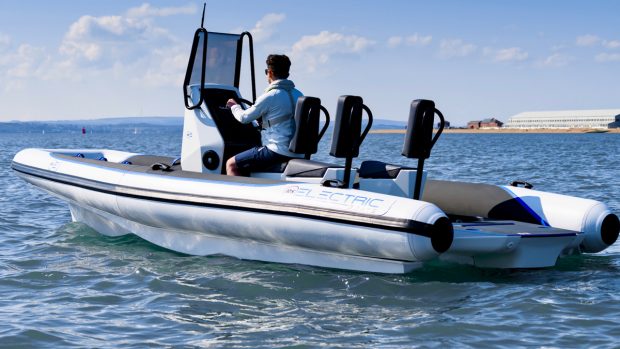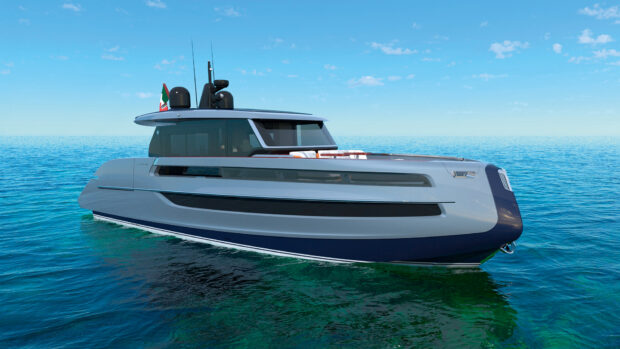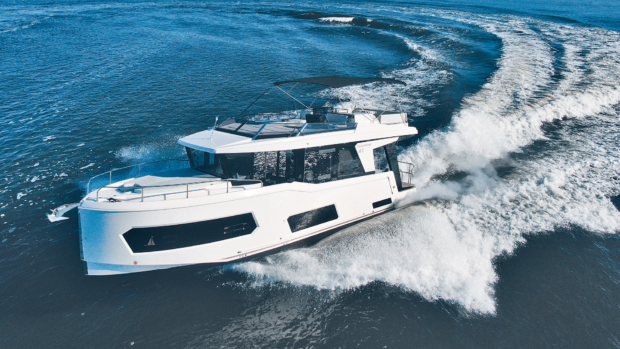The crew of Egret reach new levels of remoteness as they approach Easter Island
Position: S27 08.72 W199 26.18 Hanga Roa Harbour, Easter Island, Chile
Scott (YT) and Mary Flanders (MS) left Gibraltar on 16 September 2006, and we’ll be following their journey every step of the way, thanks to this unique online “blog”. For a complete list of all the couple’s blog entries click here
The crew of Egret reach new levels of remoteness as they approach Easter Island
Tuesday 29 April am
Our new/old buddy Southern Cross is marching by the pilothouse window. There is a reddish star low on the horizon to the west that we have been chasing all night. What is left of the moon has the water to the west and in front of our little white fibreglass ship illuminated to the point we still have to run the radar one number brighter. The air is crystal clear and untouched by pollution, while the ocean water is super clean. The wake boiling behind the transom is a sparkling mass of greens, blues and whites. For the first time yesterday after leaving the nearshore coastal water we saw our first sign of human visitors, a plastic jug.
On both Atlantic crossings the North and South Atlantic oceans were filthy in places, with pollution from plastics and other discarded things collected by current edges and distributed in long lines. Our buddies onN62 Autumn Windtangled their prop with a huge ball of discarded fish netting, hawsers, smaller lines and so on wrapped together and thrown overboard by an uncaring fisherman. Naturally this was at night causing them to run on their wing engine until daybreak when the netting could be cut away by a diver. In a number of places the water didn’t appear clean even at a distance from shore.
This expanse of water is a treat and because of the lack of population and industry this far south it should always remain the same.
The seas started laying down during the late evening and on through the night. Currently we have 12 knots of NW wind on a rising barometer (1013). The NW winds have been mild, not causing a cross chop to any degree from our past days of tradewind ESE winds and wave sets (our heading is almost due west). The CCOM is hovering around a three. We’ll see what today brings – hopefully a nice fat fish.
Tuesday 29 April pm
It is a great day today. There are gentle trade winds and relatively calm seas. We are exactly on line for a daybreak arrival off Hanga Roa, the island village, which is exciting stuff. The history of the island is fascinating and shrouded in mystery. We’ll report back as we learn more and about what we see during our stay.Egretis possibly making her own tiny bit of history. We believe this is the first time a little white fibreglass powerboat has visited Easter Island. Can you prove us wrong?
Wednesday 30 April am
It is before daybreak. Easter Island appeared on radar during Frank’s watch. Shortly afterwards he saw a tiny light in the distance. At first he thought it was a running light but as we grew closer he could see the light was on the north end of the island. Now Frank is off watch and I am watching the island slowly come to life. A few more lights are shining in the distance but we have yet to see the dark outline of the island itself.
I read some of the guides last night on watch, one, ‘South Pacific Handbook’, had some interesting statistics. It read, “Barren and detached, Easter Island lies midway between Tahiti and Chile, 4000km from the former and 3600km from the latter. Pitcairn Island, 2100km west, is the nearest inhabited land. No other populated island on earth is as isolated as this”.
The first light to the north is simply a marker. We can now see the second lights are the town of Hanga Roa shining between the mountains on either end of the island. The island is starting to take shape at six miles out and it will be daybreak in 45 minutes. We can’t wait.
We are here. TK (our anchor) dropped into 55ft of water in Hanga Roa Harbour. There are five boats in the harbour; three we know from the Deep South. We have cleared in with the Armada by radio but still have to go to shore and formally clear in. The anchorage is a bit ‘rolly’ however, with little wind and there are no safety issues except the fact that the sandy bottom area of the anchorage is limited so we are anchored tighter than we prefer.
So it begins.









